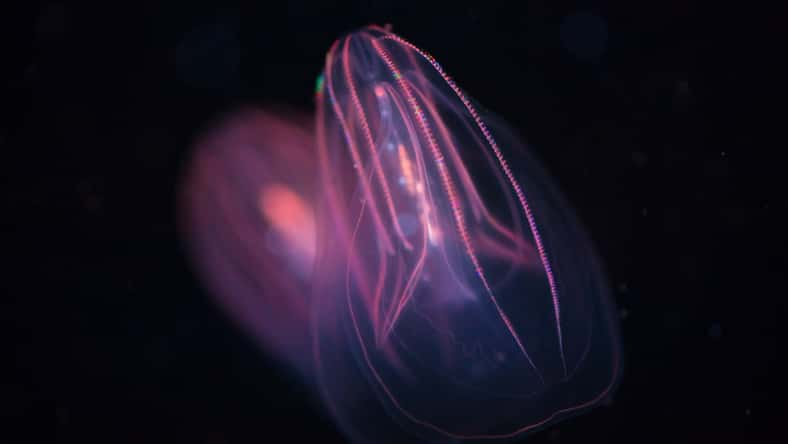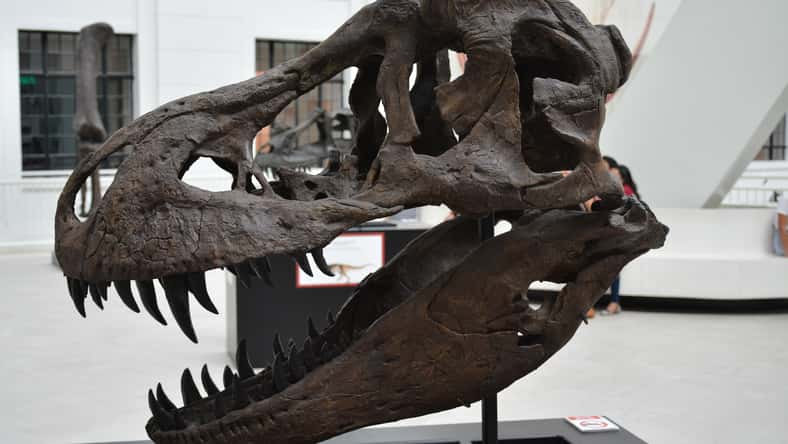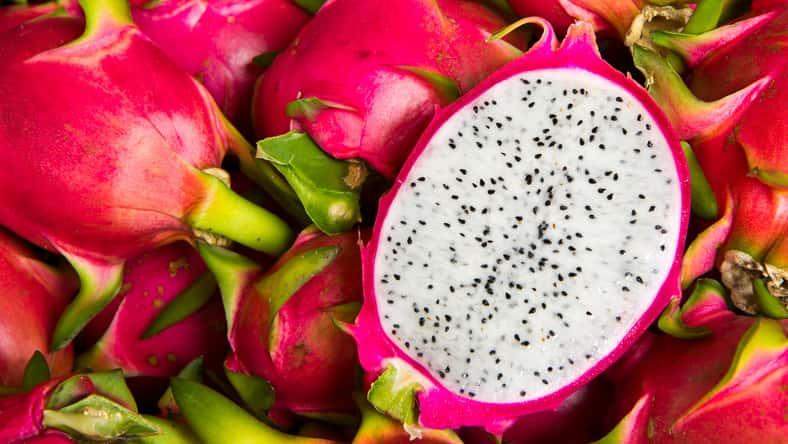
When they are injured, deep-sea creatures called comb jellies can fuse their bodies together to become one. Their nervous systems and stomachs permanently merge within a single individual.
The behavior has never been seen in other species before. Scientists accidentally discovered the new adaptation in the lab while they were conducting routine research on comb jellies.
Comb jellies are also known as ctenophores or sea walnuts. They look similar to jellyfish but have small, comb-like tentacles that do not sting.
They have translucent bodies and can light up specialized cells to create a bright glow in the deep, dark sea. It is believed comb jellies are one of the most ancient creatures in the deep sea.
In a study, a research team was examining comb jellies when they realized that one of their test subjects was missing from a tank.
Then, they noticed that one of the remaining jellies in the tank was larger than normal. After taking a closer look, they discovered that the larger jelly was two individuals joined together.
“I was very excited [when I found them],” said Kei Jokura, an evolutionary biologist at the University of Exeter in the U.K. and Japan’s National Institutes of Natural Sciences in Okazaki.
“I immediately took the fused comb jellies from the room where I was keeping them and showed them to the other lab members.”
The team suspected that the fusion was triggered by injuries in both animals. The researchers attempted to recreate the fusion process by removing small sections from the bodies of 20 individuals and pairing them up near each other.

Sign up for Chip Chick’s newsletter and get stories like this delivered to your inbox.
Nine of the pairs fused together successfully. The intentionally made injuries were considered minor compared to the ones the jellies would typically get in the wild.
The injured jellies merged quickly. They often combined fully within 24 hours of being put together. Within two hours, their nervous systems had synced up enough to react to stimuli, such as being poked by researchers.
The fused jellies were also fed fluorescent shrimp to test if their stomachs had merged. The food ingested by one of the jellies could be seen moving across both stomachs, indicating that they had indeed merged.
According to Jokura, the fused jellies acted as a single entity, but they are actually two different organisms because they have separate DNA and are unable to pass their characteristics down to the next generation.
It is the first time that any organisms have been known to fuse in this way. The behavior has likely gone unnoticed for so long because it must be incredibly rare in the wild.
Injured comb jellies have to be near each other for the merging to occur, which is much less likely in the vast deep sea.
The species can also regenerate lost body parts and reverse the aging process, so fusing with other individuals is not always necessary.
The study ended after three weeks due to a lack of funding. Most of the fused pairs were still alive at that time. The team thinks that more than two injured individuals can merge together, but the idea has yet to be tested.
The study was published in Current Biology.












